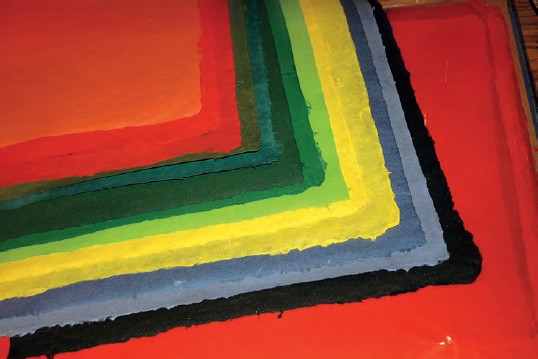
Choosing and Preparing Your Origami Paper
QUALITY CONSIDERATIONS
We fold a wide variety of papers, but lasting art requires quality not commonly found in readily available, decorative papers. Here’s what you should know:
Kraft
The most common papers readily available to the folding artist today are made from wood pulp. These are also the least expensive papers because trees (and tree-top scrap remaining from logging operations) are readily available, and trees are a renewable resource. Huge paper mills located in the northern climates continuously receive truckloads of trees, often from mixed species. The wood is chopped in large-scale machinery, and the inch-sized wood bits are soaked in water. The kraft process, a common method to process the wood bits with harsh chemicals (sodium hydroxide and sodium sulfide), was developed in Germany over a century ago. Since this treatment yields fiber that is strong enough for most general-purpose papers, it was given the name “kraft,” which means “strength” in German. The alkaline solution and wood mixture is cooked under high pressure with steam. This process quickly separates the brown, gooey, unwanted lignins from the desired fibers of cellulose. Today, that stock is often mixed with fiber from post-consumer paper recycling. You are probably most familiar with the sturdy brown paper grocery bags produced by the kraft process. When similar material is corrugated and laminated between layers to hold the ribs in place, it forms cardboard for boxes and packaging. Fiberboard for shoeboxes and cereal boxes are yet another familiar, less-refined kraft product.

A selection of handmade abaca papers made at the Origamido Studio.
Bond
Long ago, the loose fuzz on minimally processed kraft papers interfered with ink pen nibs, and so those loose fibers needed to be “bound” onto a smooth, flat surface to produce reliably acceptable stock. This is why writing paper is called “bond.” That same fuzz also affects the performance of mechanical copiers and printing machines today, and so copier paper is now often called “office bond.” Additional refinement is needed to produce fine writing papers. The pulp is usually bleached white to improve writing legibility, and then the surface is made harder and more opaque by adding minerals such as kaolin clay or chemical “size,” such as polymers that harden when the pulp is dried or heated. Bond papers traditionally folded quite nicely, but now manufacturers seem to be incorporating more recycled, waste fiber “streams.” Commercial bond stock is usually not considered a permanent media for folded art due to the variable and unknown origin of recycled content.
Bond papers do work well for practice, especially if the models have only a few steps, and for folding any models not intended to last for posterity. Such machine-made paper will yield acceptable, six-inch, Japanese origami cranes. As you will learn in the Japanese Crane lesson (page 34), a beginning folder may soon notice that the points of the beak, wings and tail are more difficult to form perfectly from bond paper, especially on one side of each corner. Part of this is due to the relative thickness, but most of the problem comes from the grain, or disproportionate alignment of fibers. A crease formed between fiber strands is easier to make than one placed perpendicularly across the ends of aligned fibers. Placing creases to form an “airplane point” at one of a square’s corners tends to be more difficult on one side, where the fiber alignment opposes the direction of the intended fold as the adjacent edges are brought together. One flap will easily bend because the crease is being made parallel to, or with the grain; but the other flap resists, with the alignment of the fibers forcing the actual crease to splay away from the corner. Michael likes to use a tool to “convince” the ends of the fibers (cut across the grain) to fold where he wants them to, rather than splay away.
To counteract this tendency, most types of office bond can be “zone folded,” by applying a localized swipe of moisture along the intended fold line with a cotton swab (whereas “wet folding,” or moistening the entire sheet, usually causes puckering of the model as it dries). The thickness of bond paper helps the beginning folder learn to anticipate accommodating the buildup of multiple layers by leaving a slight gap between raw edges as the crease is placed. This allows sufficient room for them to come together as those edges are folded inside subsequent folds.
Origami Paper
Also called “kami,” which is Japanese for paper, “origami paper” is a term that many folders today use to describe the ubiquitous packaged folding papers made from thinner sheets of wood pulp. It typically has color applied to only one side. Kami was developed in the 1800s to support the paper folding exercises introduced to young children attending Friedrich Froebel’s Kindergarten. In the United States, Milton Bradley, a lithographer, produced some of the first widely distributed, commercially packaged materials designed to support the newly imported Kindergarten system. We credit Froebel with insisting upon “one sheet, no cuts,” and the use of small squares (“to better fit small hands”) with color on only one side. These were selected for economy as well as for the interesting patterns produced when the paper is folded in particular ways. “Duo kami” (two-colored origami paper) describes folding paper with two colors — one on each side of the paper.
Momigami
“Momigami” refers to Japanese papers with decorative, crinkled or wrinkled surfaces. There are several modern methods to mass-produce imitation momigami from wood pulp papers.
Long-time folders pine for the days when regular origami paper was much stronger than it is today. They’ve noticed the drop in quality through the last few decades, probably due to the inclusion of post-consumer waste paper from offices, factories and households. This discarded packaging, junk mail, newspapers and magazine fiber stock is highly variable from time to time, and from location to location. The inclusion of recycled stock generally shortens the average length of the cellulose fibers in the mix, and so other, longer, stronger fibers or polymers must be added to the batch to boost its strength.
Mass production economy dictates that wood pulps must be processed quickly, and that is most easily accomplished with aggressive chemicals such as strongly alkaline solutions, which are neutralized with correspondingly strong acids. Even though this stock is thoroughly rinsed, traces of acid can and do remain in the paper (called internal, or residual acids). Batch variability makes it difficult for the consumer to know exactly what is contained within inexpensive papers. Rapid, global industrialization has also increased coal burning and the amount of acidic compounds of chlorine, sulphur and nitrogen in the atmosphere. Over long periods of time, papers without a sufficient level of internal buffering can discolor, fade, turn yellow and / or become brittle with age. Although some paper makers add alkaline buffering compounds to counteract this effect, doing so adds expense and changes the nature of the paper.
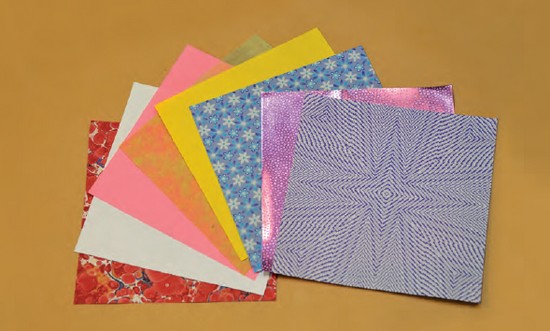
Origami paper and foils are inexpensive and widely available in wonderful patterns and colors that make these papers so popular with folders.
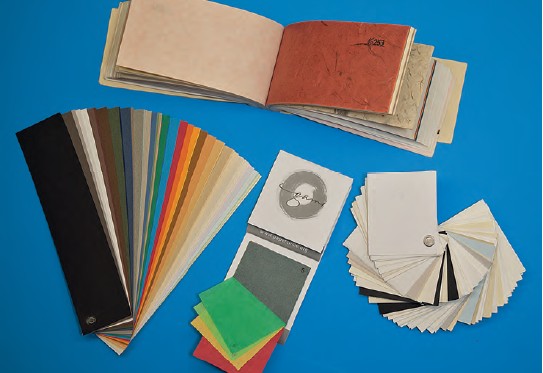
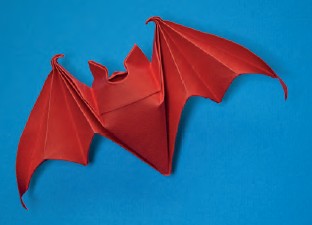
Commercially available art papers can yield satisfactory results. They are a step up from cheap “origami papers,” but not as prized as handmade papers.
Because of this, there are several brands of papers used by commercial and fine artists that have become popular with paper folders. We don’t know exactly what is in each of these materials because paper formulas are often considered trade secrets, but there seems to be a higher level of quality control with the following brands of so-called “art papers.”
Art Papers
These are a commercially available compromise. They are more expensive than bond, but still affordable, and often sold as “archival.” As folding materials, these do work well for many wet-folded objects. These papers are available in different weights, and so the relative thickness of the thinner weights is usually not a problem when used to fold larger models for public display. Because these papers are designed for artistic uses, origami displays in retail store windows look great when the subjects are wet folded with these popular brands: Zanders’ “Elephant Hide”; Samwha Paper Co.’s “Leathack” and “Tant”; Graphic Products Corporation’s “Wyndstone”; Daler Rowney’s “Canford”; and Canson’s “Mi-Teintes.” These are just some of the popular brands of strong art paper favored by well-known origami artists such as Chris Palmer, who tessellates large sheets; or Robert Lang, who wet folds structurally strong bowls, goblets and boxes. We have many pieces of art folded from these commercial products by artist friends through the years. Unfortunately, we have found that the colors of these commercially available “art papers” tend to fade when the objects are exposed to bright light (on display in the gallery, or exposed to sunlight). If you enjoy the folding qualities of art papers, we recommend that you consider first coloring the surface with an acrylic wash or pigmented paint similar in tone to the paper itself.
In general, wood pulp paper is usually not the best choice when folding art that you might want to outlast you — perhaps your heirs (or the museum that they sell it to) will want it to be around for hundreds of years without any serious compromises in strength or any changes in color.
Watercolor Paper
Other high quality, commercially produced papers made from exceptionally strong fibers have been used by fine artists for hundreds of years for charcoal sketching, pencil and ink pen drawing, and for painting. The most common paper choice for these fine art uses is fairly thick watercolor paper made of cotton. This material also works well for folding larger works of origami, but it usually proves too thick for the majority of origami subjects. Because it is also highly sized, it will require moistening before folding to prevent cracking. Many folders are inexperienced with wet-folding techniques, and so they often over-wet the paper, which can result in puckering when it is dried.
US Money, or Paper Currency
US dollars are made from a combination of fibers specifically selected for durability, and therefore we feel that they belong in this category as a superior material for paper folders.
Handmade Papers
A piece of folded art is more likely to last when it is folded from high grade cellulose harvested from superior plants, at the right time in the season, and carefully processed in the correct manner by an experienced paper maker. Handmade papers with exceptionally high strength can be made from natural plant fibers of abaca (in the banana family of monocotyledons), kozo (paper mulberry), hemp, cotton, flax or gampi, or blends of any of these. These are what we use when we make hand-made papers at the Origamido Studio. These plants produce fibers that are usually more supple and longer, and so they generally do not require chemical binders, size and other additives to impart strength to the sheet, affording a better resistance to aging and embrittlement. We use the Aardvark system of pigmenting the fibers (after the fibers are beaten) to minimize discoloration. Many commercial papers are dyed with inexpensive chemicals that fade when exposed to sunlight.
Skins, Hides, and Other Collagen Papers
Parchments (sheepskin) and vellums (other animal skins) and even synthetic faux parchments or faux vellums represent a class of disparate modern engineered materials that the paper artist should evaluate on a case-by-case basis. Any skin-based folding materials were historically preserved with inorganic toxins, such as chromium (still commonly used in tanning), but also arsenic, lead or cadmium, added to poison microbes and render the material biologically stable, or “archival.” It is difficult to ascertain sufficient safety information about some materials available on the global market, so let the buyer beware. We are always on the lookout for new synthetic substitutes for paper. Most of the innovation seems to be directed toward developing archival materials.
Metals, Foils, and Metallized Films
Florist foils, kitchen foil, kraft paperbacked foils, and the heavier duo foils (often called Japanese foils) are fun to fold because they make attractive objects that are easily shaped. As art materials, they rarely look good after a few years, losing their shine to a visible film of dust or oxidation, or exhibiting signs of crazing (cracking) at the folds that reveals white cellulose substrate.
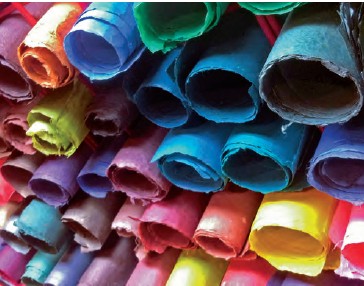
We make more paper than we can use, so we bring the excess to the paperfolding conventions we attend.
Plasticized Papers
These include papers with synthetic coatings, including LASER-etched holographics, Mylar colorful wrapping papers, printed wrappers for candy and snacks and specialty foilized composites. They are suitable for short-term commercial uses because of their attractive surface. These plastic components can degrade over time, sometimes flaking, often springing out of shape.
If you desire hybrid properties, you may also want to experiment with laminated composites of pairs of the above, back coated or bonded with methylcellulose, starch paste or even spray or dry mount polymer adhesives.
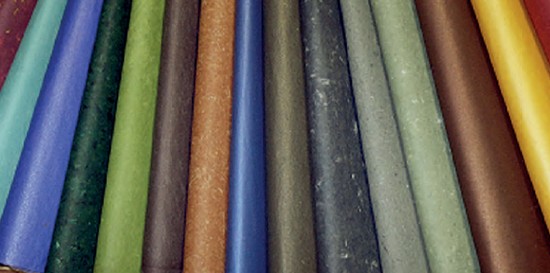
A palette of colors made for Michael’s exhibit at the Morikami Museum & Japanese Gardens, Delray Beach, FL.